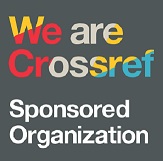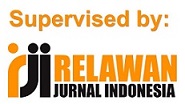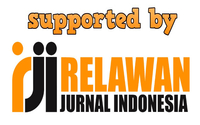THE ROLE OF MYTHOLOGICAL CREATURES IN THE C.S LEWIS’ THE LION, THE WITCH, AND THE WARDROBE: EXPLORING SYMBOLISM AND THEMES
Abstract
Keywords
Full Text:
PDFReferences
Ambayon, C. M. (2020). Modular-based approach and students’ achievement in literature. International Journal of Education and Literacy Studies, 8(3), 32. https://doi.org/10.7575/aiac.ijels.v.8n.3p.32
Banța, I. C. (2019). Some considerations regarding the concept of myth (definitions, classifications). Anuarul Institutului de Cercetări Socio-Umane „C.S. Nicolăescu-Plopșor” (“C.S. Nicolăescu-Plopşor” Institute for Research in Social Studies and Humanities Yearbook (CSNIPSSH Yearbook). Institutul de Cercetări Socio-Umane „C.S. Nicolăescu-Plopșor al Academiei Române, issue XX, pages 135-144,
Biju, E., & Meenakshi, K. (2019). Fables to digitalisation - Special focus on C. S. Lewis’ chronicles of Narnia. International Journal of Mechanical Engineering and Technology, 10(2), 561–570.
Bogdan, Robet, Biklen, K. S. (2007). Qualitative research for education: an introduction to theories and methods. Retrieved from https://b-ok.cc/book/2665513/7b28b9
Eslit, E. R. (2023). Use of mythical creatures in folk literature of southeast asia: A comparative analysis. IJRAEL: International Journal of Religion Education and Law, 2(2), 89–96. https://doi.org/10.57235/ijrael.v2i2.493
Gilley, R. K. (1967). Myth and meaning in three novels of hugh maclennan. The University of British Columbia.
Inayah, & Hidayah, A. (2022). A myth of wereworl in viking wolf movie (2022). Metaphor, 6(1), 76-90. Retrieved from https://ojs.unsiq.ac.id/index.php/metaphor/article/view/6428
Izadifar, A. (2020). Centaur mind : A glimpse into an integrative structure of centaur mind : a glimpse into an integrative structure of consciousness. Journal of Conscious Evolution, 16.
Kõiva, M. (2019). The wolf: Human/non-human relations on the basis of etiologies and verbal communication. Folklore (Estonia), 77(December 2019), 181–198. https://doi.org/10.7592/FEJF2019.77.koiva
Kroll, J. (2019). Riding the centaur metaphor from past to present: myth, constellation and non-gendered hybrid dr. IAFOR Journal of Literature and Librarianship, 8(1).
Maya, D. A. (2023). The Significances of the lion symbolism in the trilogy of the chronicles narnia (symbolic interactionism approach). UIN Raden Mas Said Surakarta.
Mills, C. M., Goldstein, T. R., Kanumuru, P., Monroe, A. J., & Quintero, N. B. (2023). Debunking the santa myth: The process and aftermath of becoming skeptical about Santa. Developmental Psychology, 60(1), 1–16. https://doi.org/10.1037/dev0001662
Priya, R. D. R. (2023). Fantasy in speculative world with reference to c.s.lewis’s the lion, the witch and the wardrobe. Agpe the Royal Gondwana Research Journal of History, Science, Economic, Political And Social Science, 04(04), 50–55.
Raj, G. (2024). Literature and mythology: Exploring mythological elements and archetypes in “the lion, the witch and the wardrobe.” International Journal of English Literature and Social Sciences, 9(1), 148–154. https://doi.org/10.22161/ijels.91.20
Septiana, R. (2019). Makna denotasi, konotasi dan mitos dalam film. Manado: Universitas Sam Ratulangi Fakultas Ilmu Budaya.
Sholekha, U. (2021). Dryad sebagai ide penciptaan karya seni lukis. Yohyakarta: Institut Seni Indonesia Yogyakarta.
Suarniti, G. A. M. R. (2019). Values found in lewis’s the chronicles of narnia. KULTURISTIK: Jurnal Bahasa Dan Budaya, 3(2), 1. https://doi.org/10.22225/kulturistik.3.2.1184
Villanueva, A. (2023). Three christian symbols that are thematic turning points in “ the chronicles of narnia : the lion , the witch and the wardrobe. Unpubublished Theses. Universitas Jember. Retrieved from http://repository.unej.ac.id/handle/123456789/19204
Wahana, B. M., & Johan, M. (2022). An analysis of themes that build on c.s. lewis’s novel “the lion, the witch, and the wardrobe.” EJI (English Journal of Indragiri): Studies in Education, Literature, and LInguistic), 6(2), 163–173.
Wang, X. Y. (2023). The legacy of ancient cultures: Rational concepts in ancient chinese and ancient greek mythology and their significance in modern literature. Eurasian Journal of Applied Linguistics, 9(1), 110–122. https://doi.org/10.32601/ejal.901010
Wedhowerti, W. (2024). The representation of the mythological tanuki in studio ghibli’s pom poko: barthesian semiotic analysis. Language Literacy: Journal of Linguistics, Literature, and Language Teaching, 8(1), 98–106. https://doi.org/10.30743/ll.v8i1.9199
Zharylgapovw, Z., Syzdykova, B., Kaiyrbekova, A., Babashov, A., & Shakirova, K. (2023). Myth and mythological discourse in literary studies. Bakhtiniana, 18(4). https://doi.org/10.1590/2176-4573P63680
DOI: https://doi.org/10.30743/ll.v8i2.10141
Refbacks
- There are currently no refbacks.
Fakultas Sastra
Universitas Islam Sumatera Utara (UISU), Medan
Jl. Sisingamangaraja Teladan Medan 20217
Telp. (061) 7869911, e-mail: language_literacy@sastra.uisu.ac.id









